Hundertwasser Biography
1928
Born in Vienna on December 15th as Friedrich Stowasser.
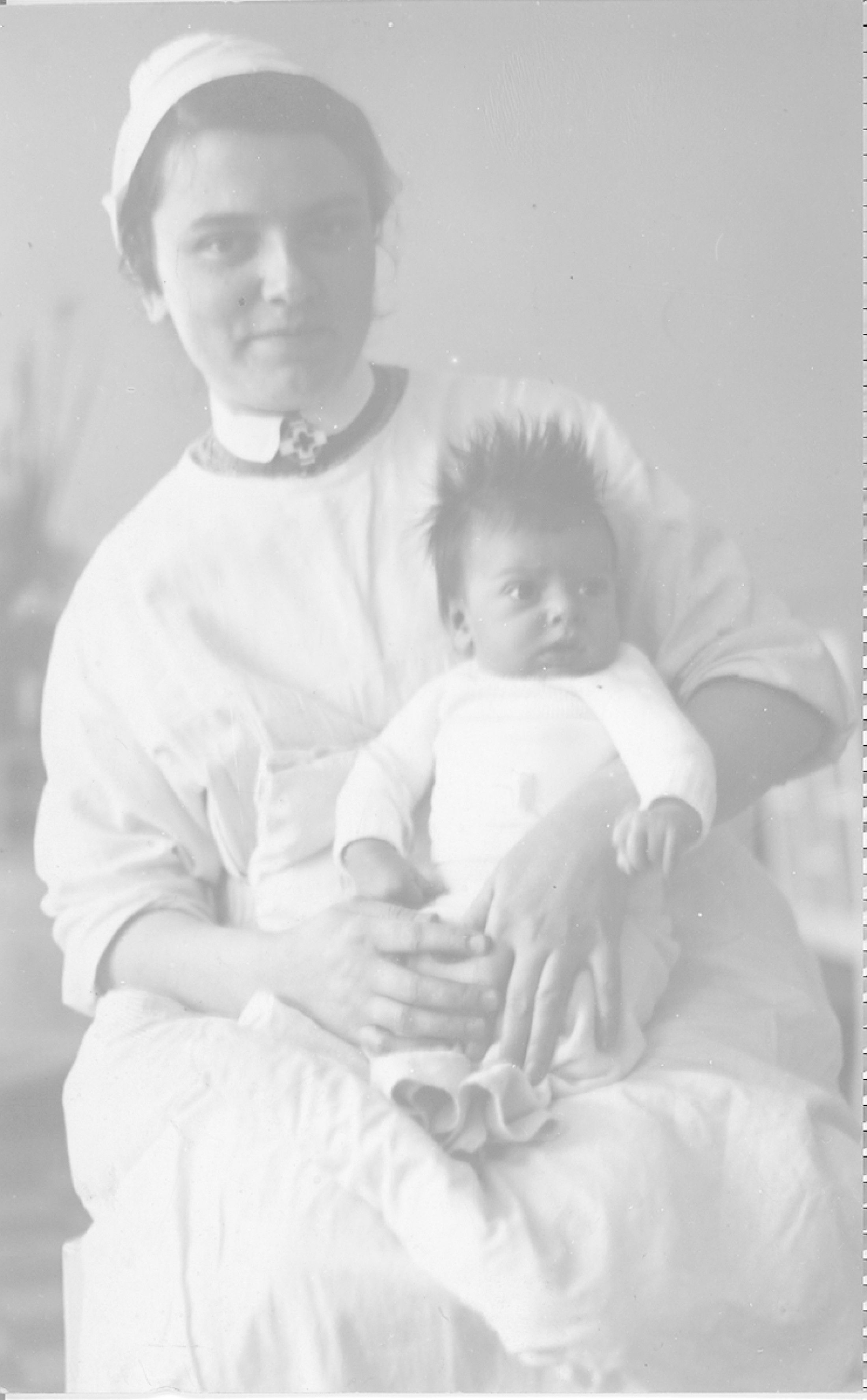
1938
Following Austria’s annexation into Nazi Germany, Stowasser and his Jewish mother are forced to relocate to Vienna’s second district, to his aunt’s and grandmother’s home on Obere Donaustrasse.
1943
First deliberate drawings from nature.
69 of his Jewish relations on his mother’s side are deported and killed in the concentration camps of Nazi Germany.

1948
School graduation. Leaves Academy of Fine Arts in Vienna after three months. Lastingly influenced by exhibitions of Walter Kampmann and Egon Schiele.
1949
Adopts the name Hundertwasser. Start of extensive travelling.
Develops his own style. In Florence he meets René Brô and follows him to Paris.
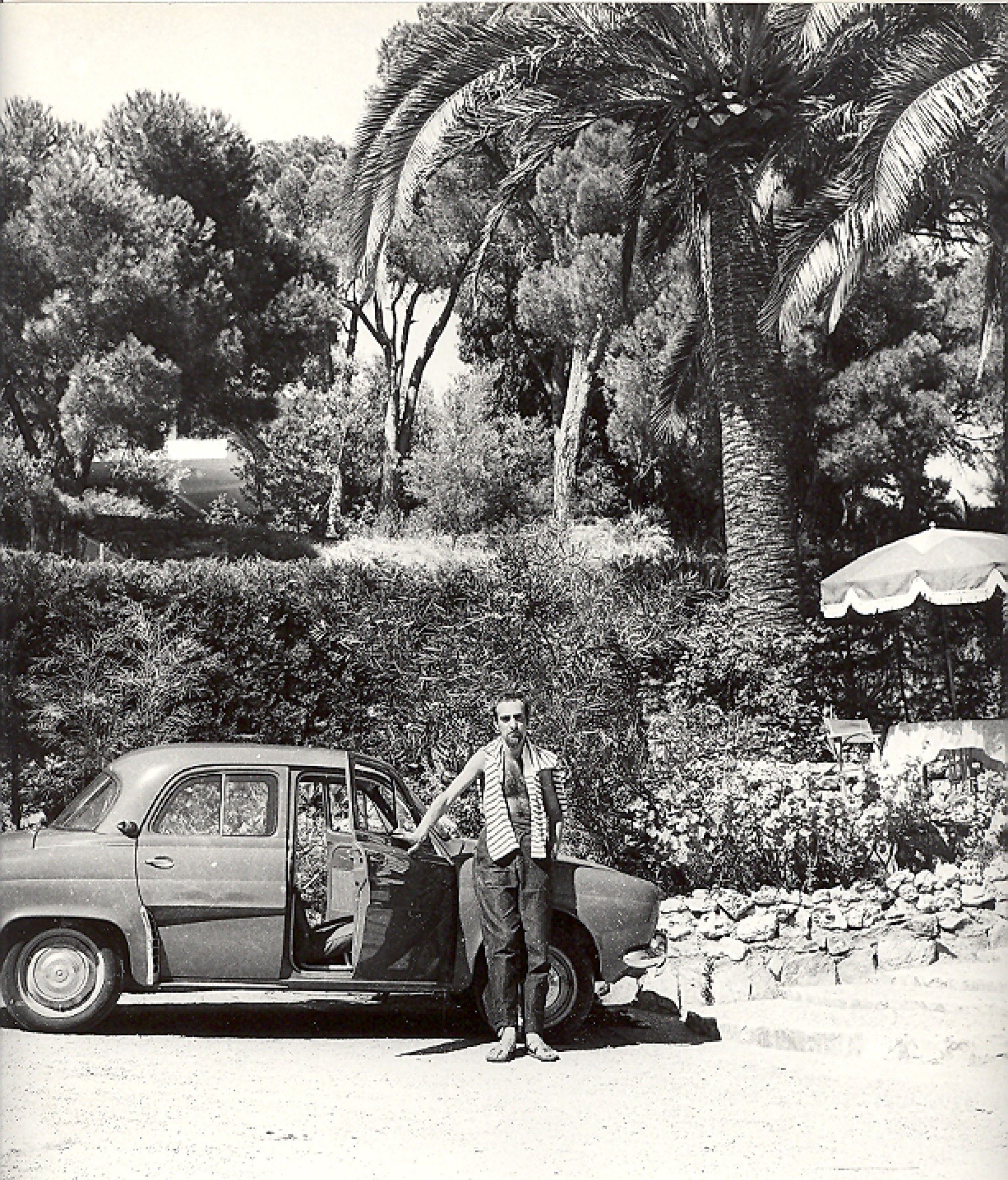
1952
First exhibition in Art Club of Vienna.
1953
Paints his first spiral.
1954
First exhibition in Paris at the Studio Paul Facchetti. Develops the theory of "trans-automatism" and begins to number his works.
1955
Exhibition at Carlo Cardazzo’s Galleria del Naviglio, Milan.
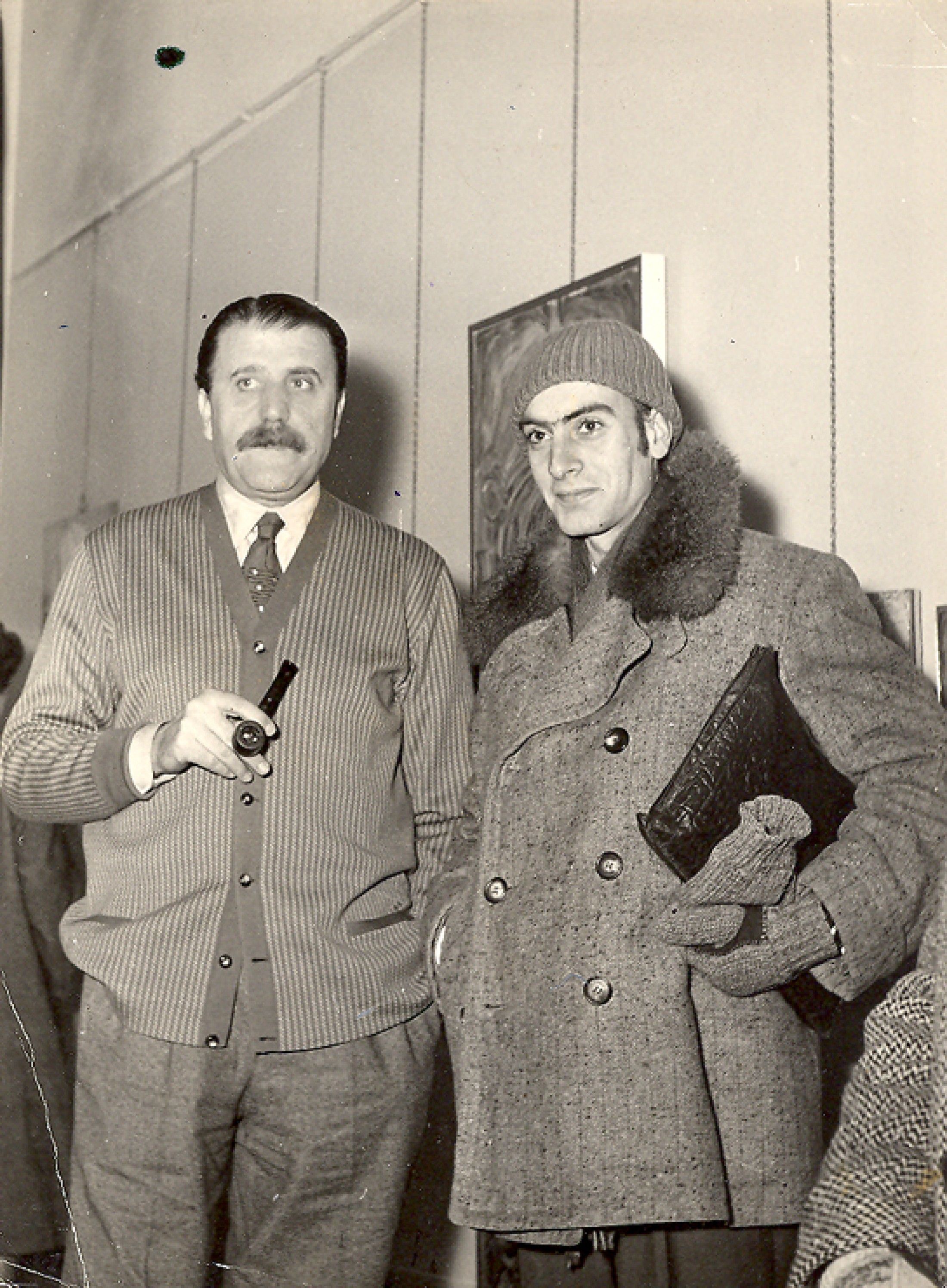
1956
Publishes his theory of “Transautomatism” in the French Magazines “Cimaises” and “Phases”.
1957
Publishes the “Grammar of Seeing” on the occasion of an exhibition in Paris.
1958
Reads his “Mouldiness Manifesto against Rationalism in Architecture” on the occasion of an art congress in Seckau Monastery, Styria, Austria.

1959
Together with Ernst Fuchs and Arnulf Rainer, founds the “Pintorarium”, a universal academy of all creative fields. As guest lecturer at the Academy of Fine Art in Hamburg, he draws the “Endless Line” with Bazon Brock and Schuldt. Resigns lectureship following scandal.
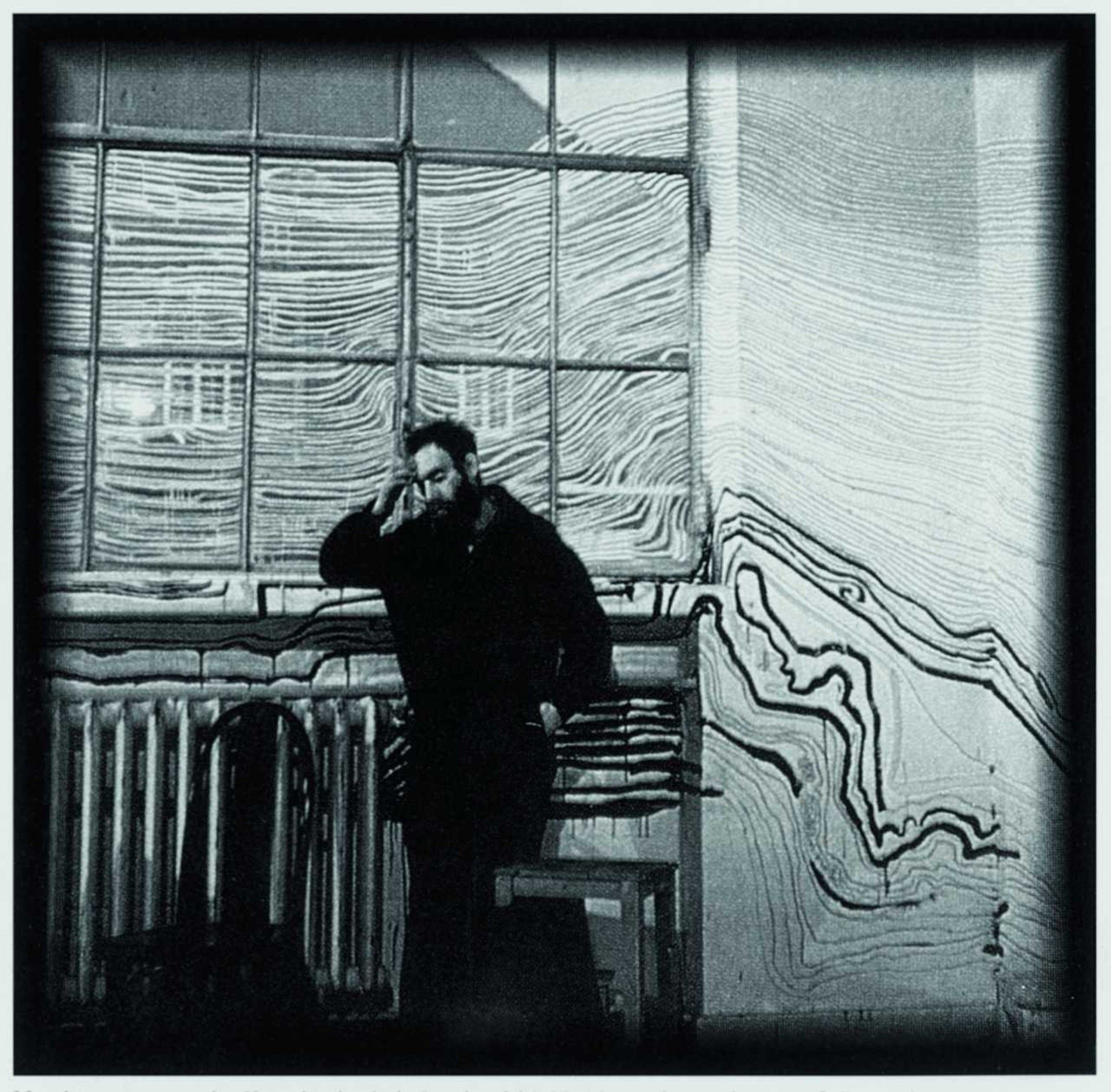
1961
Stays in Japan. Receives the Mainichi Prize at the 6th International Art Exhibition in Tokyo. Successful exhibition in Tokyo Gallery.
1962
Successful retrospective at the Venice Biennale.
1964
Retrospective in the Kestner-Gesellschaft, Hanover, with œuvre catalogue.
1966
First documentary film, produced by Ferry Radax.
1967
Nude speech for “The Right to a Third Skin” in Munich.
1968 - 1972
The “San Giuseppe T”, an old wooden salt hauler is converted into the “Regentag” in dockyards in the Venice lagoon.
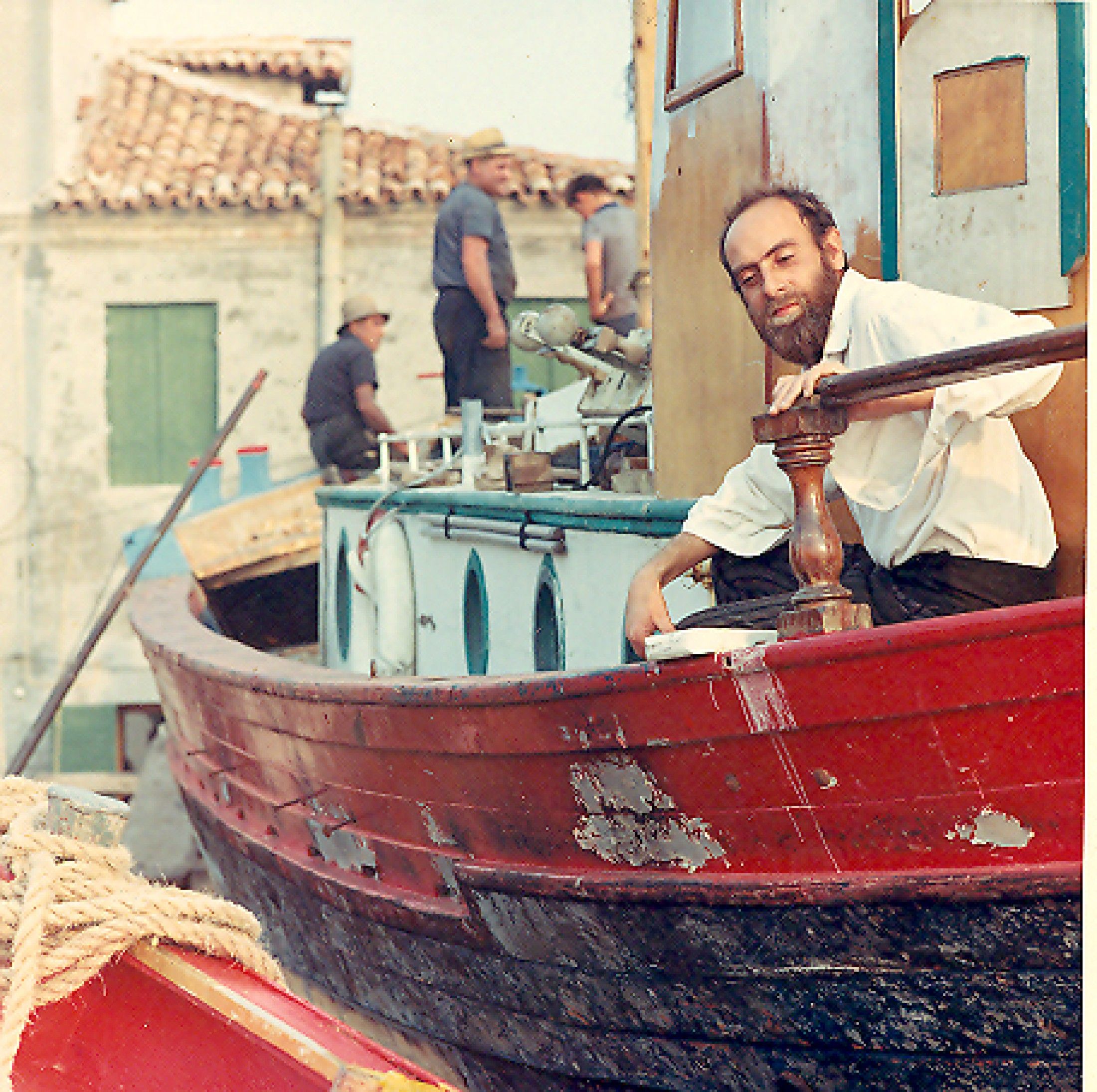
1968
Nude demonstration against rationalism in architecture and reading of his Architecture-Boycott-Manifesto “Los von Loos” (Loose from Loos) manifesto in Vienna.
1969
Museum travelling exhibition in the United States, starting at the University of California, Berkeley.
1970
Collaboration with Peter Schamoni on the film “Hundertwasser’s Rainy Day”.
1971
Lives and works on board the “Regentag” in the Venice lagoon. Works on the Olympia poster for Munich in Lengmoos.
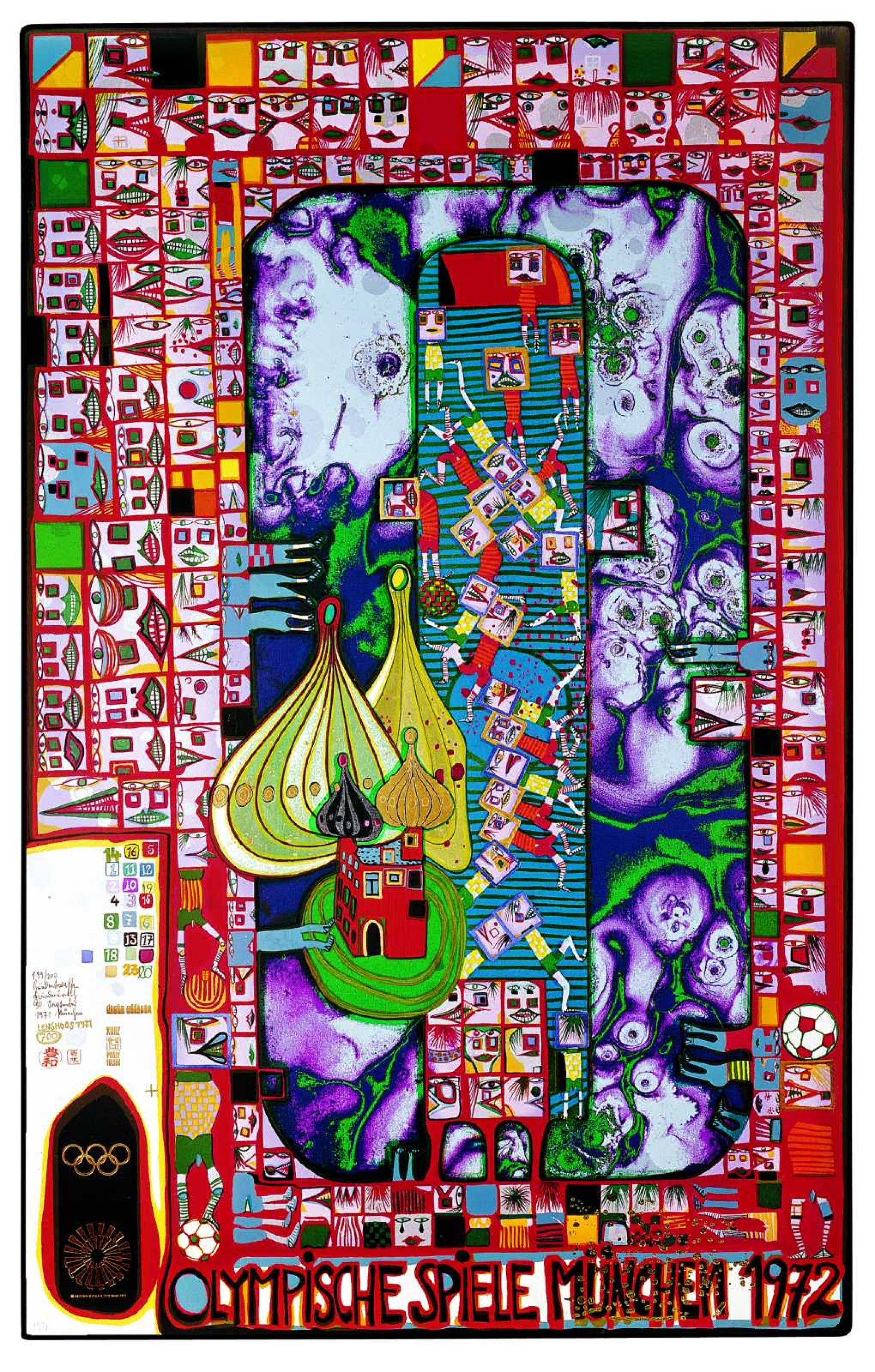
1972
Friendship with Joram Harel.
In the TV show “Wünsch dir was” (Make a Wish), demonstrates roof forestation and individual façade design. Publishes manifesto “Your window right – your tree duty”.
1973
First portfolio with Japanese woodcuts: “Nana Hyaku Mizu”. Hundertwasser is the first European painter to have his works cut by Japanese masters. Takes part in the Milan Triennial, where c. 15 tree tenants are planted in house facades of Via Manzoni.
Travelling museum exhibition in New Zealand.
1974
The Albertina, Vienna, shows the exhibition "Stowasser 1943 bis Hundertwasser 1974“, presenting for the first time his youth / early work and the complete graphic oeuvre. The Albertina Exhibition of Hundertwasser’s Complete Graphic Work 1951-1974 is conceived as a travelling exhibition, by 1992 the graphics have been shown at over 80 museums and galleries in 15 countries.
Paints the Conservation Week poster for New Zealand and receives the Conservation Award.
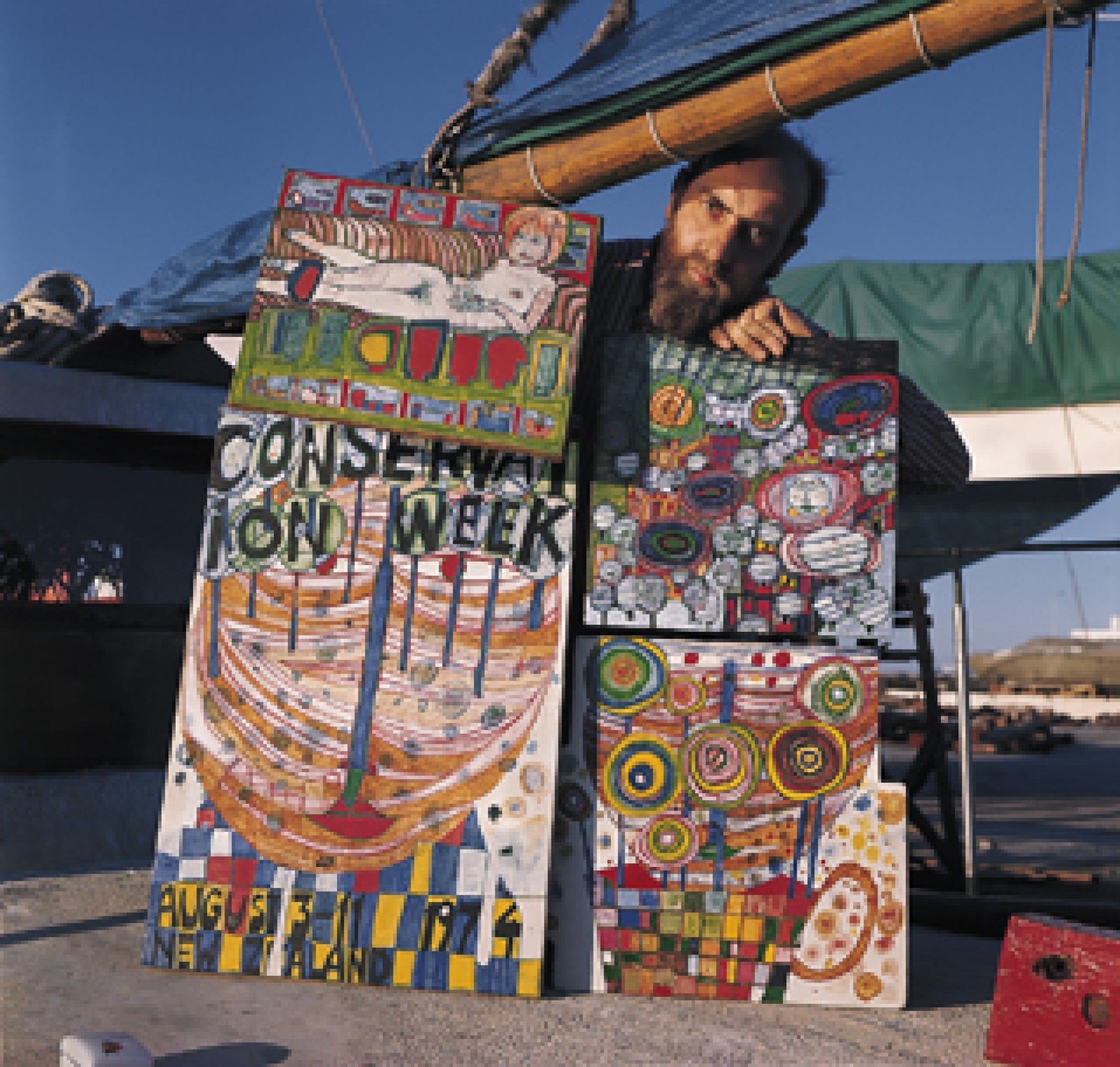
1975
Exhibition in Haus der Kunst, Munich. Manifesto “Humus-Toilet”. Designs a postage stamp for Austria: “Spiral Tree”. Hereby launches the post stamps series “Modern Art in Austria”. Beginning of the world travelling exhibition tour in the Musée d’Art Moderne de la Ville de Paris, continued until 1983 in 27 countries and 43 museums. Sails the “Regentag” across the Atlantic to the Caribbean, through the Panama Canal to the Pacific.
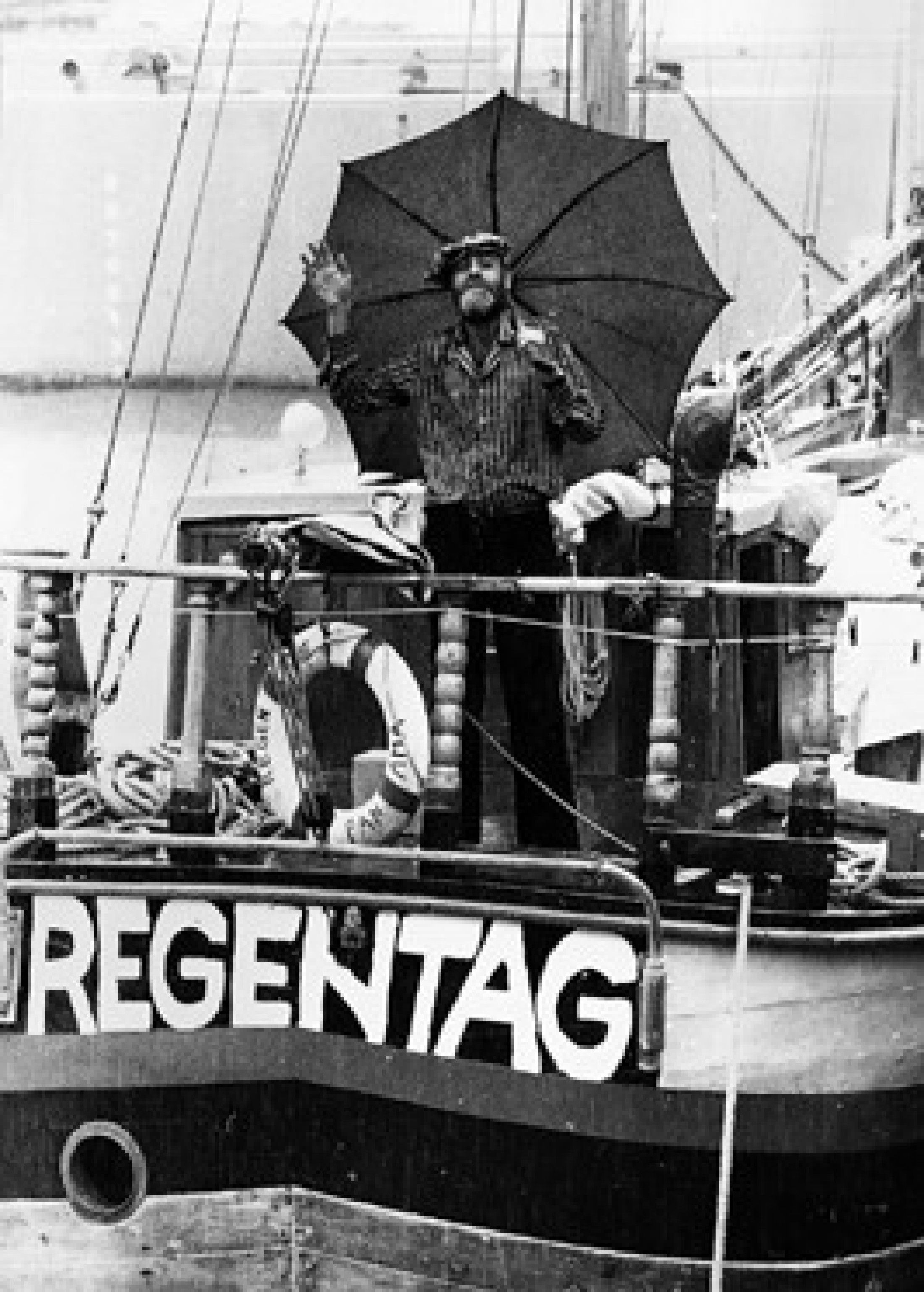
1978
Designs “Peace flag for the Holy Land” with a green Arab sickle moon and blue Star of David against a white background and publishes his “Peace Manifesto”.
1979
Three stamps printed for Senegal. Reads aloud his manifesto on recycling “Shit Culture – Holy Shit” at Pfäffikon on the Lake of Zurich. The touring exhibition “Hundertwasser Is Painting” with 40 new works starts in New York.
1980
Speaks on ecology, against nuclear power and for a more human architecture in harmony with nature in the U.S. Senate, the Corcoran Gallery, and the Phillips Collection in Washington, D.C., in Berlin, in Vienna and Oslo Technical University.
“Hundertwasser Day” in Washington, D.C., proclaimed by Mayor Marion Barry. Jr. Tree planting in Judiciary Square, Washington, D.C.

1981
Receives the 1980 Grand Austrian State Prize for the Arts; reception speech against negativistic avant-garde in modern art against nuclear energy; appointed head of a Master School at the Academy of Fine Arts, Vienna.
1982
Postage stamps for the Cape Verde Islands. Lectures on architecture, environmental protection and art in Sydney, Manila, Seattle, San Francisco, Washington DC. “Hundertwasser Week” in San Francisco to mark the presentation of the posters donated to Greenpeace and Jacques Cousteau Society. Exhibition at Artcurial in Paris.
1983
Designs six postage stamps for the United Nations on the occasion of the 35th anniversary of the Human Rights Declaration. Foundation stone of the Hundertwasser House is laid in Vienna. Donation of a poster to the Norwegian Ministry for the Environment and tree planting in Oso.
Works in Spinea on silkscreen 860 Homo Humus Come Va How Do You Do in 10,002 different versions.

1984
Takes an active part in campaigns to save Hainburg leas, Austria.
1985
Start of the cooperation with the architect Peter Pelikan. Works all year on the building site of the Hundertwasser House in Vienna. 70,000 visitors attend the “Open House”.
Nominated Officier dans l’ordre des Arts et des Lettres by the French Minister of Culture Jack Lang.
1986
Designs “Uluru – Down-under Flag” for Australia. Book design of the Brockhaus Encyclopaedia.
1987
Redesigns St. Barbara’s Church in Bärnbach, Austria, and makes the design for a Children’s Day-care Centre in Heddernheim, Frankfurt, Germany.
1988
Redesigns and campaigns to retain the existing Austrian licence plates.
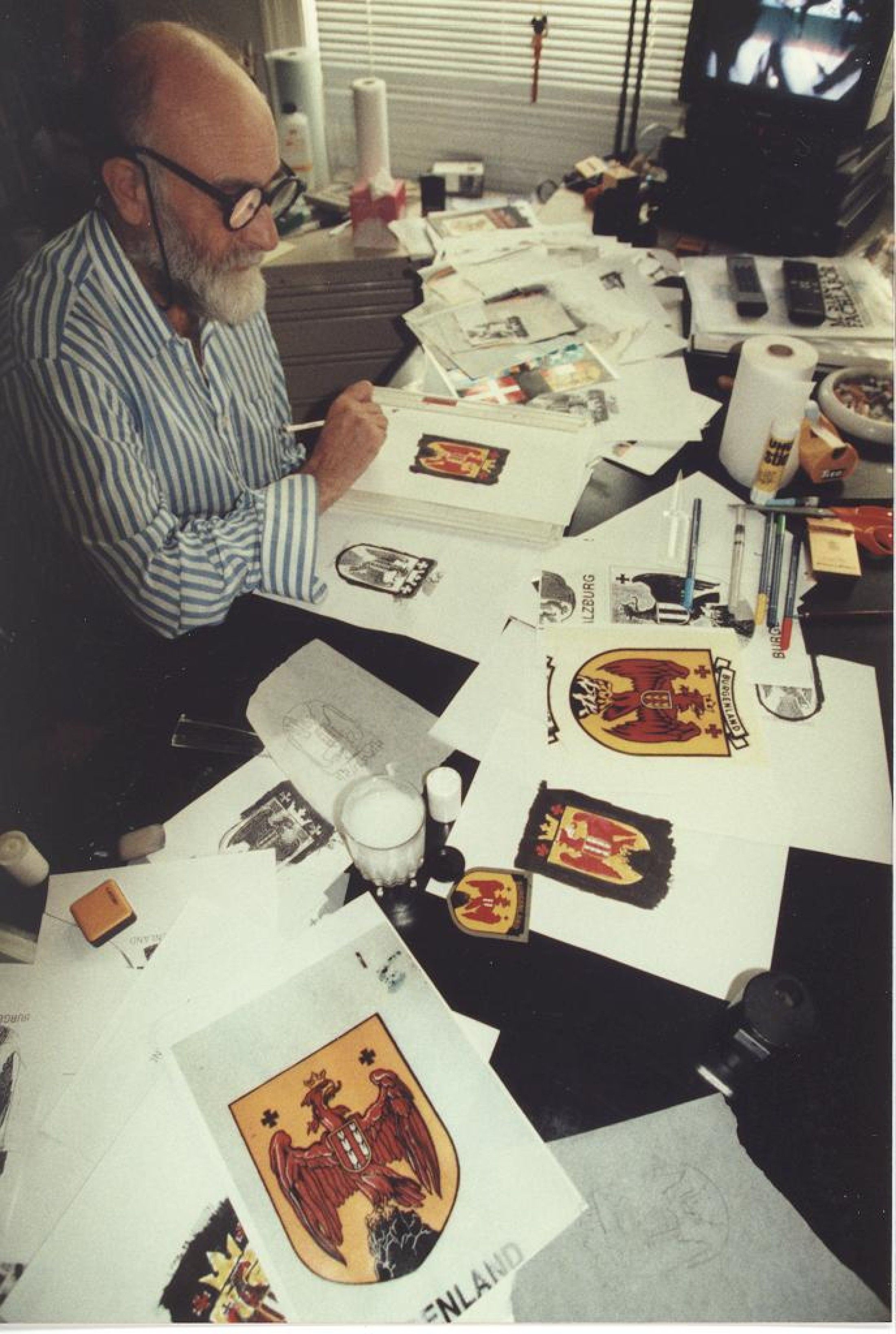
1989
Builds architecture model “In the Meadow Hills”.
1990
Works on architecture projects: KunstHausWien; Highway Restaurant Bad Fischau Austria; District Heating Plant Spittelau, Vienna; In the Meadows, Bad Soden, Germany; Village Shopping Mall, Vienna; Textile Factory Muntlix, Austria; Winery Napa Valley, California.
1991
Inauguration of KunstHausWien on April, 9. Concept and development of architecture projects: inner Courtyard of the Housing Development in Plochingen, Germany; the Thermal Village Blumau, Austria.
1992
In Tokyo Hundertwasser’s Countdown 21st Century Monument for TBS is installed
1993
Involvement in the campaign opposing Austria’s joining of the European Union.
1995
Postage stamps for Luxembourg and for the UN on occasion of the world summit of social development in Copenhagen. On the invitation of Weltbild publishers works on the book design of The Bible.
1996
Unveiling of the Danube ship “MS Vindobona”, redesigned by Hundertwasser.
1997
Design and planning of architecture projects: The Forest Spiral of Darmstadt, Hohe-Haine-Dresden, Germany; MOP Maishima Incineration Plant for the city of Osaka, Japan; Market Hall Altenrhein, Switzerland. Beginning of construction work at the Martin Luther Gymnasium in Wittenberg, Germany.
1998
Architecture design for the Pumping Station, Sakishima Island, Osaka, Japan. “The Submersion of Atlantis”, a ceramic mural is installed at the Orient Metro Station in Lisbon.
1999
Architecture projects: Maishima Sludge Center, Osaka; The Green Citadel of Magdeburg, Hundertwasser Environmental Railroad Station, Uelzen, Ronald McDonald House, Essen, Germany; Kawakawa Public Toilet, New Zealand.
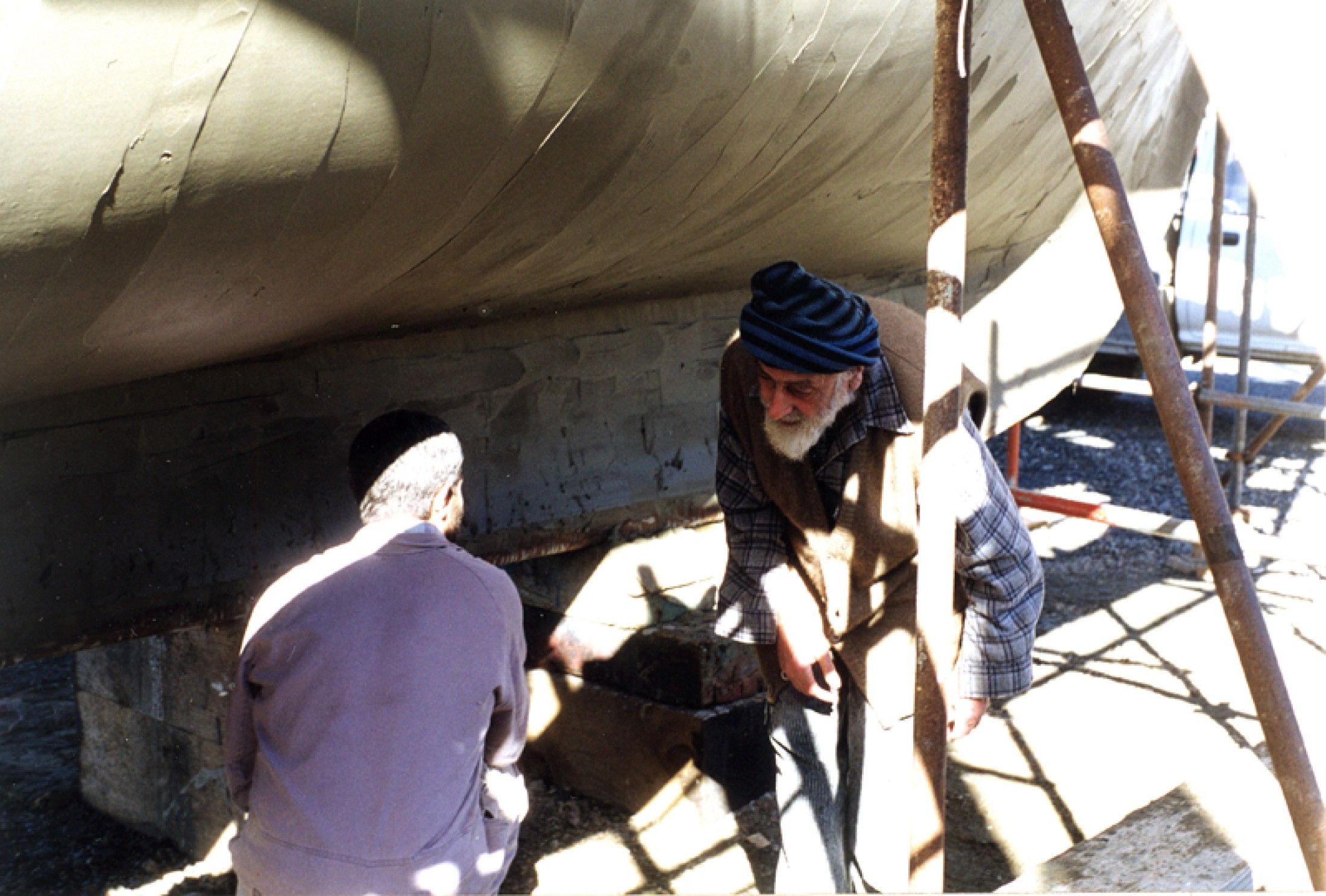
2000
Dies on Saturday, February 19, in the Pacific, on board of Queen Elizabeth 2 from a heart attack. According to his wish he is being buried in harmony with nature on his land in New Zealand, in the Garden of the Happy Dead, a Tulip Tree is planted on his burial place.
For a more comprehensive version visit:
Hundertwasser’s works were exhibited throughout the world. See exhibitions listed here: